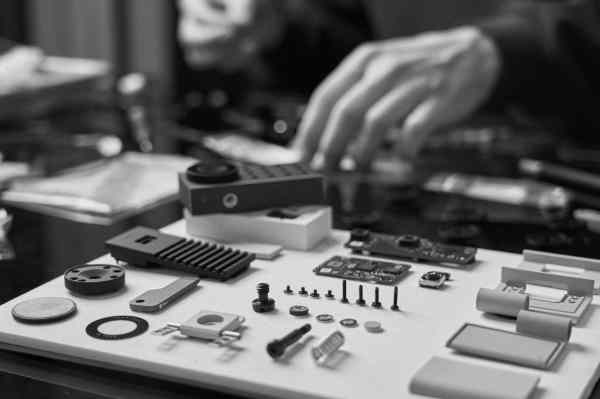December 14 marks two years since Opal launched the C1 after accruing a 16,000-person waitlist. In some respect, one couldn’t ask for a better time to launch a webcam than a global pandemic. Our relationship to work has transformed a good deal over the last 3.5 years, but for the most part, webcams haven’t been up to the task.
Ahead of launch, the C1 received good marks for hardware design and picture quality, with many reviewers referring to the camera as a low-cost DSLR webcam alternative. There were, however, some shortcomings, primarily on the software side. The startup acknowledged some of the system’s key issues and promised fixes were coming.
“When we launched, we were at four people on the team,” co-founder Stefan Sohlstrom told TechCrunch during an interview this week. “What a typical hardware has is a huge amount of firmware engineers and quality assurance engineers, and you can’t do that with four people. The amount of off-the-shelf code that we were using on the software side that we had to completely rip out and rewrite — it was a journal. That’s what we’ve been doing over the last several months is completely rewriting 100% of the firmware. We also launched a new app called Composer. Also, a lot of the machine learning and computer vision is done in a much more stable way now.”

Image Credits: Opal Camera
Opal closed its seed round in November 2020. The small team opened sales for its first product 13 months later. Along with early bugs, the startup grappled with customer feedback, thanks to its miniscule headcount. Some early supporters began to ding the company for a lack of communication.
“I think for us, there was difficulty with the race of time, capital and launch,” said Sohlstrom. “Getting all of those resources aligned at the exact same moment, frankly, I don’t know if we could have. Believe me, we wanted to respond to every single customer, especially in those early few months, as we were working through bugs. Right now, on the customer experience side, we definitely have a great staff. Especially on the quality side, where we have these formal processes that companies are sometimes dedicating hundreds of employees to, if not thousands. We don’t have that money yet, but we definitely have good processes in place for next time.”
Opal has spent the past year hiring across the board, effectively quadrupling its launch headcount to 16 full-time employees. It’s still a tiny number, compared to the competition, but the company says it’s currently far better positioned to manager consumer feedback and expectations.
The company’s number one priority in terms of hiring is engineers, however. This week, Opal announced a $17 million Series A. The round was led by Founders Fund and includes influencers like Marques Brownlee and Casey Neistat.

Image Credits: Opal Camera
“We launched to all this demand, all this interest that we didn’t have the capacity to handle it,” said co-founder and CEO Veeraj Chugh. “We had this product that people clearly wanted. Let’s build the team and business behind it. That’s supply chain, hardware, software, engineering, business, all that good stuff. The second part is R&D for the next Opal devices. Not just building the business of C1, but building the next chapter of Opal. Sticking our toe in the water of what we can do beyond webcams, as well. That was a big part of the raise, as well.”
Opal won’t reveal any specifics around forthcoming products, only that the company is planning for a successor to C1 and altogether new products. Its founders say they’ve managed to navigate some of the trickiest supply chain issues. In the early days, that meant finding places of surplus they could take advantage of during shortages. For example, the system is powered by the Movidius Myriad X, a chip Intel developed for processing imaging data on robotics hardware like RealSense.
The company says it’s making an effort to keep the team “relatively lean.” Opal also opened an SF office this past year — its first since launching at the height of the pandemic. It was launched as a remote-only company out of necessity, with employees couriering hardware prototypes back and forth. Remote work is allowed, but the startup encourages coming into the office, as a certain percentage of in-person time is required for running a hardware startup.
“It’s kind of part of the job,” said Chugh. “Our policy is that anyone can work from home, but when it comes to hardware, when it comes to industrial design, when it comes to electrical engineering, that stuff is really difficult — and I would say nearly impossible to get done well and quickly. And honestly, it’s just more fun. The best part of running a hardware company is being one of the first people that gets to touch a device.”

Image Credits: Opal Camera
As for the C1, Opal admits that there’s still work be done to get it to where the company wants it to be.
“We have a high bar for ourselves, and we want the C1 to be the best webcam bar-none on the market,” explained Sohlstrom. “In some areas, I think we’re absolutely there. We do compete with DSLR in quality in some capacity. But obviously there are a lot of different features in a camera that make it truly great, and I think that we will continue to improve things. Sometimes hardware is a constraint, sometimes firmware is a constraint. I think we’ve solved a lot of the big problems that were really keeping us up at night. Is it the webcam of our dreams right now? No, we will continue to improve.”
